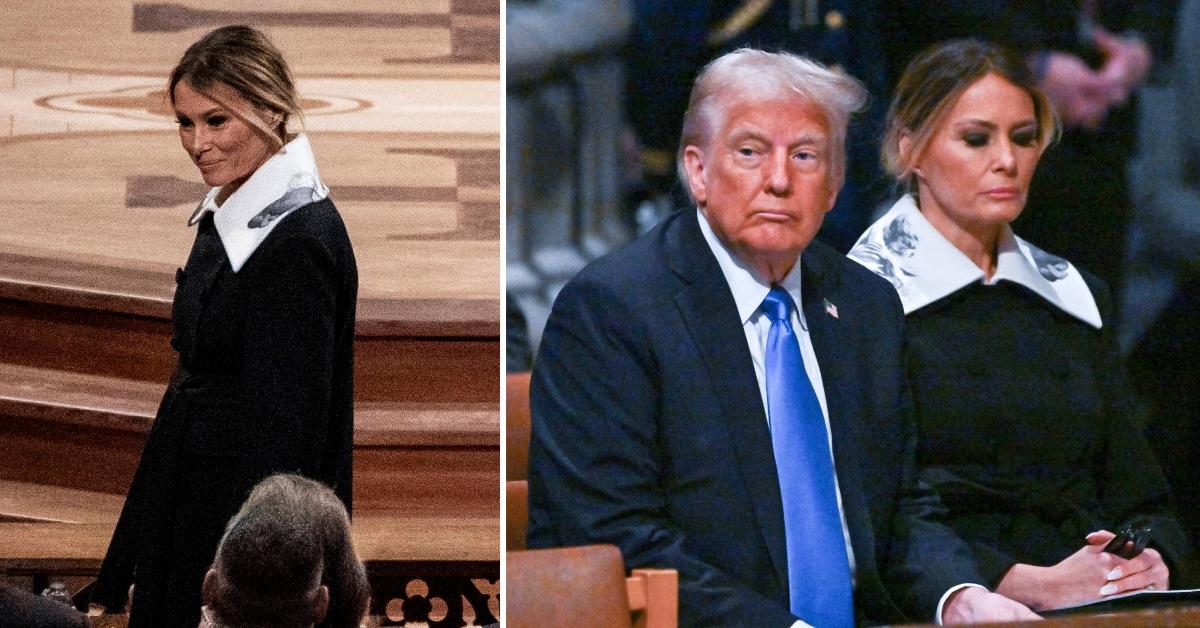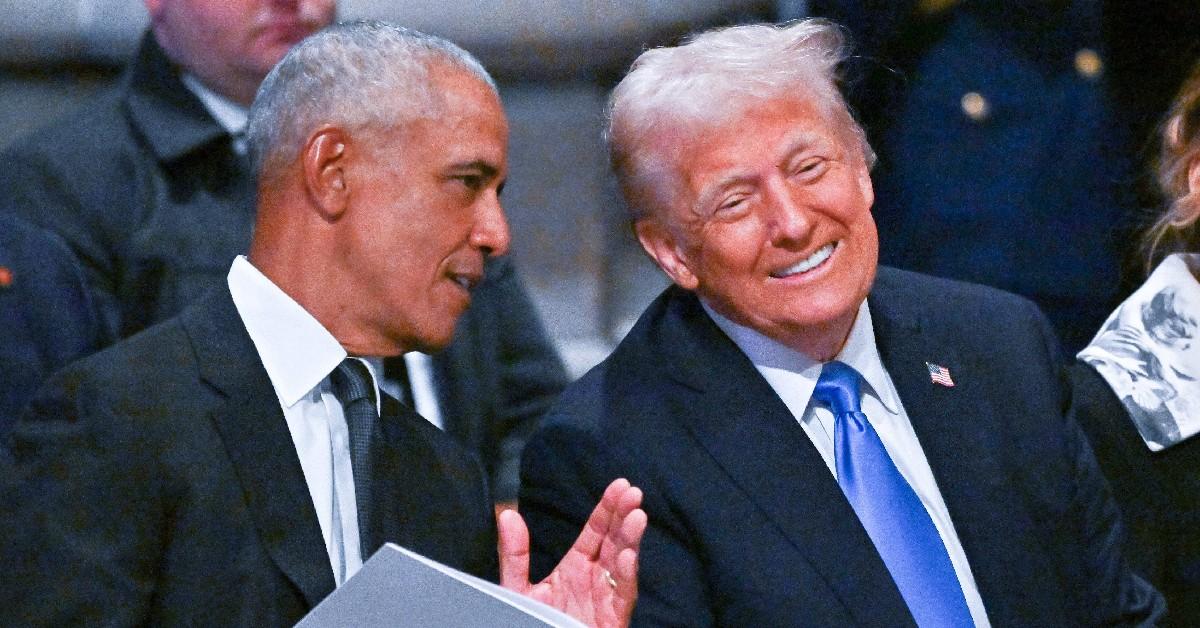On Wednesday, President-elect Donald Trump’s lawyers urged the U.S. Supreme Court to block his sentencing in New York for falsifying business records to conceal his 2016 hush payment to porn star Stormy Daniels. Todd Blanche, whom Trump plans to appoint as his deputy attorney general, and D. John Sauer, Trump’s pick for solicitor general, warned that “forcing President Trump to prepare for a criminal sentencing in a felony case while he is preparing to lead the free world as President of the United States in less than two weeks imposes an intolerable, unconstitutional burden on him” that undermines “national security and vital interests.”
Most of the justices were unimpressed by that argument. In an unsigned order issued on Thursday evening, they declined to intervene in the New York case, saying “the burden that sentencing will impose on the President-Elect’s responsibilities is relatively insubstantial in light of the trial court’s stated intent to impose a sentence of ‘unconditional discharge’ after a brief virtual hearing.”
Since that sentence amounts to no punishment at all and Trump can still appeal his 34 felony convictions, the practical consequences of that order are indeed “relatively insubstantial.” But the decision confirms what should have been clear from Trump’s track record at the Supreme Court: Even though six of the nine justices are Republican appointees, including three nominated by Trump himself, that does not mean he can count on the Court to rule in his favor. Even the Court’s harshest critics on the left are apt to be grateful for that fact during Trump’s second term, especially in light of his authoritarian impulses and his threats to deploy his powers against his political opponents.
Justices Clarence Thomas, Samuel Alito, Neil Gorsuch, and Brett Kavanaugh said they would have granted Trump’s application for a stay. But the majority included Chief Justice John Roberts, a George W. Bush appointee, and Justice Amy Coney Barrett, a Trump appointee, as well as the three justices nominated by Democrats.
That lineup, New York Times reporter Adam Liptak argues, is further evidence of Barrett’s “independent streak,” which he says was also apparent last summer in Trump v. United States and Fischer v. United States. But these examples are more complicated than Liptak implies.
In the former case, the majority endorsed a broad view of presidential immunity from prosecution for “official acts,” casting doubt on whether Trump could be prosecuted for trying to overturn the outcome of the 2020 presidential election. In a partial concurrence, Barrett took a narrower view of presidential immunity that would give prosecutors more leeway to charge a former president based on arguably official conduct. But the majority opinion was written by Roberts, who in other cases has not been shy about ruling against Trump.
In Fischer, which involved a Capitol rioter charged with obstructing an official proceeding, Roberts’ majority opinion said a defendant can be convicted of that crime only if he “impaired the availability or integrity for use in an official proceeding of records, documents, objects,” or “other things used in the proceeding, or attempted to do so.” That ruling also helped Trump, who had been charged with obstructing an official proceeding in the federal election interference case.
In a dissent joined by Justices Sonia Sotomayor and Elena Kagan, Barrett disagreed with the majority’s reading of the statute. But Justice Ketanji Brown Jackson, a Biden nominee, joined the majority opinion and wrote a concurrence, which was consistent with civil libertarian concerns about due process and fair notice.
Liptak also mentions Trump v. Anderson, the March 2024 case in which the Court said states could not exclude Trump from the 2020 presidential ballot as an insurrectionist under the 14th Amendment. But although the justices were divided on the rationale for that decision, they were unanimous in concluding that state officials did not have that power.
Those three decisions, Liptak says, “undermined the reputation [Roberts] had built over almost two decades as an institutionalist who sought to defend his court against charges that it is warped by politics.” But the assumption that any decision favoring Trump must be “warped by politics” is neither fair nor reasonable, as illustrated by Jackson’s position in Fischer and the unanimous result in Trump v. Anderson. By the same logic, justices appointed by Democrats must be motivated by partisan considerations every time they rule against Trump.
Justices who do what they are supposed to do by interpreting and applying the law according to politically neutral principles are bound to agree with Trump in some cases and disagree with him in others. And given Trump’s repeatedly demonstrated disregard for statutory and constitutional restraints, you would expect that the Court would rule against him more often than not, which is what happened during his first term.
“In his first administration,” Liptak notes, Trump “did poorly in the Supreme Court in signed decisions in orally argued cases in which the United States, an executive department, an independent agency or the president himself was a party, prevailing only 42 percent of the time, the lowest rate since at least Franklin D. Roosevelt’s administration. In other words, a fundamentally conservative court, now with a six-justice majority of Republican appointees that includes three named by Mr. Trump himself, has not been particularly receptive to his arguments. The Biden administration, by contrast, has been on the winning side 54 percent of the time.”
During the last century, every president has fared substantially better at the Supreme Court than Trump, with success rates ranging from 52 percent (Barack Obama) to 75 percent (Ronald Reagan). They typically have prevailed more than 60 percent of the time.
Trump’s broader judicial track record in his first term was even worse. When it analyzed the outcomes of federal cases involving Trump agency actions from 2017 through the end of his administration, the New York University School of Law’s Institute for Policy Integrity found that the government was unsuccessful 78 percent of the time.
Trump’s defeats at the Supreme Court included its 2020 ruling in Bostock v. Clayton County, which held that federal law bars employment discrimination based on sexual orientation. Gorsuch wrote the majority opinion, which was joined by Roberts and four other justices.
Another memorable loss was the Court’s 2019 decision in Trump v. Mazars, which rejected Trump’s attempt to block a state subpoena for his tax returns. The majority included two Trump nominees, Gorsuch and Kavanaugh, whose “betrayal” reportedly enraged him. “In our system of government, as this Court has often stated, no one is above the law,” Kavanaugh wrote in a concurring opinion joined by Gorsuch. “That principle applies, of course, to a President.”
Later that year, Trump took his anger at the Supreme Court public after it declined to hear two cases challenging the outcome of the 2020 election. He complained that the justices—including Gorsuch, Kavanaugh, and Barrett—had “just ‘chickened out’ and didn’t want to rule on the merits.” Two weeks later, Trump called the justices “totally incompetent and weak” as well as cowardly. By refusing to consider his “absolute PROOF” of “massive Election Fraud,” he said, they effectively endorsed “corrupt elections,” meaning “we have no country!”
Trump reiterated that complaint during his pre-riot “stop the steal” speech on January 6, 2021. “I’m not happy with the Supreme Court,” he told his supporters. “They love to rule against me.”
The hits kept coming after Trump left office. Last June in Garland v. Cargill, the Supreme Court rejected Trump’s unilateral ban on bump stocks, ruling that it exceeded the statutory authority of federal gun regulators. While Trump’s left-leaning opponents might have been displeased by the outcome, the ruling vindicated the separation of powers and the rule of law—principles that progressive critics of the bump stock decision will be keen to uphold during the next four years.
Similarly, the Supreme Court’s June 2024 repudiation of the Chevron doctrine provoked much consternation on the left but is apt to facilitate challenges to Trump’s second-term policies. Under that doctrine, which the Court disavowed in Loper Bright Enterprises v. Raimondo, judges deferred to agency interpretations of “ambiguous” statutes as long as the interpretations were “permissible” or “reasonable.”
As critics of Loper Bright saw it, the decision was bound to benefit the wealthy and powerful by blocking regulations aimed at protecting the public. But as Gorsuch noted in that case, the Chevron doctrine imposed a bigger burden on ordinary people confronted by bureaucrats who were empowered to invent their own authority. Anyone who is worried about what Trump might do during his second term should be glad that his agencies will no longer have that license.
Although it did not directly involve Trump, the Court’s July 2024 ruling in Moody v. NetChoice and NetChoice v. Paxton, which addressed challenges to state laws restricting content moderation by social media platforms, did not go the way he wanted. Contrary to Trump’s view that such laws protect freedom of speech, Kagan’s majority opinion, which was joined by Roberts and Barrett, made it clear that “government efforts to alter an edited compilation of third-party expression are subject to judicial review for compliance with the First Amendment.” That position is plainly at odds with Trump’s desire to override private moderation decisions, as exemplified by the agenda of his pick to run the Federal Communications Commission.
In another pair of social media cases last March, the Court unanimously held, in an opinion by Barrett, that public officials may be violating the First Amendment when they selectively block critics on platforms such as Facebook. That was the same issue Trump raised when he tried to block dissenting voices on Twitter during his first term.
“Trump has made clear that going forward he is going to be even less concerned with abiding by the Constitution and federal law than he was the last time he was in the White House,” Brianne Gorod, a lawyer at the Constitutional Accountability Center, told NBC News after the election, “so the courts, including the Supreme Court, are on notice that their role as a vital check in our constitutional system will be tested.” On balance, the Court’s prior decisions suggest it will not shirk that responsibility.
The post Trump’s Latest Defeat Is One of Many Decisions That Suggest SCOTUS Won’t Rubber-Stamp His Agenda appeared first on Reason.com.














